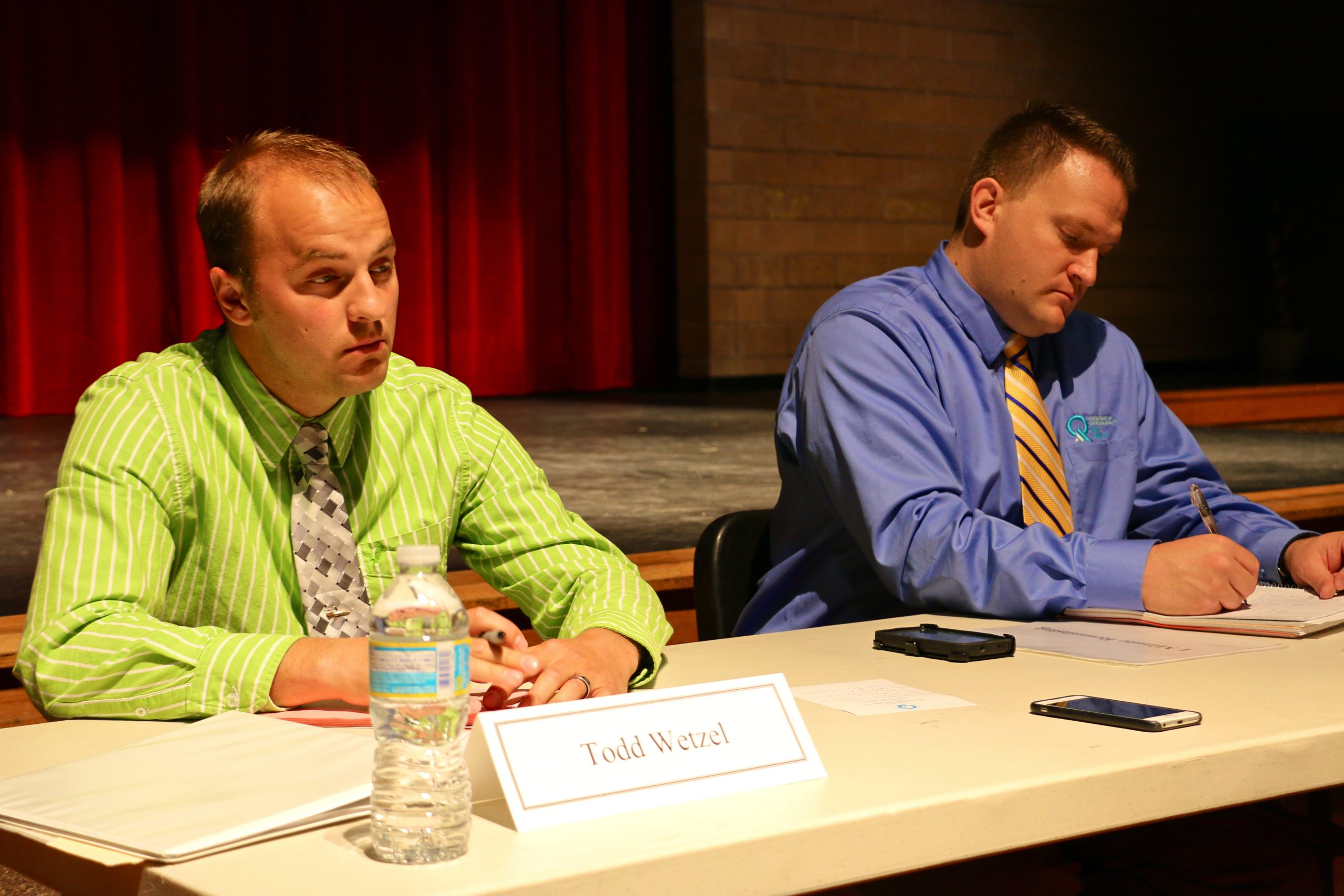Some information may be outdated.
Natural gas flaring could resume on a limited scale near Dead Horse Point State Park, under a proposal to revive an oil well off state Route 313 northwest of Moab.
The new owners of Fidelity Production & Exploration’s Moab-area assets are seeking the state’s permission to complete work on a previously constructed oil well in the Cane Creek Unit. Wesco Operating, Inc., wants to construct a single well pad and operate a well on School and Institutional Trust Lands (SITLA) property that could process up to 43,800 barrels of oil per year.
Natural gas is a byproduct of oil production in the Big Flat area, and the Casper, Wyoming-based company would either flare off the gas, or use it as a fuel for on-site equipment, according to the Utah Division of Air Quality (DAQ).
If the division approves the company’s plans, Wesco would be limited to flaring up to 1,800 mcfs of natural gas per month. (One mcf equals 1,000 standard cubic feet of gas.)
Utah DAQ Major New Source Review Section Manager Alan Humperys said the state considers the proposed well to be a minor source of emissions that is not subject to operating permits. However, he said the division is proposing that the company’s plans must meet every applicable state and federal requirement.
“Basically, what the company does is they come to us for permission to pollute into the air, and … we’re issuing a permit to them basically telling them what they need to do,” Humperys told local residents during a Sept. 20 public hearing on the proposal.
Environmentalists and conservationists have raised concerns in the past about the effects that natural gas flaring have on air quality and night skies in the Big Flat area, and they repeated many of those same concerns last week.
Moab resident Marlene Huckaby, who previously worked at Canyonlands National Park’s Island in the Sky District, said the sight of flares along state Route 313 was out of place.
“At that time, there was a flame (flaring) there, and I used to go by that and think, ‘What a waste of oil, and the pollution that’s coming into our air,’” she said.
Since then, the International Dark-Sky Association has recognized both parks for having some of the darkest night skies in the country, and that increasingly rare attraction draws growing numbers of visitors to the Moab area.
“We invite people from out of town to come see our night sky, and if we have that flaring, it eventually will take away that night sky,” she said. “We won’t have the beauty of seeing the stars.”
To capture natural gas that would otherwise go to waste in flames, Fidelity built the Dead Horse Lateral natural gas pipeline, which leads to a natural gas processing plant near Canyonlands Field Airport.
But Utah DAQ Environmental Engineer Todd Wetzel said that Fidelity didn’t install an offshoot from the lateral line to the well in question and two neighboring wells because they never produced enough gas to make it economically viable.
Fidelity conducted an experimental fracking – or hydraulic fracturing – technique in 2014 to increase oil production at the well. But more recent data from July show that it produced just 191 barrels of oil – and 131 barrels of water – over a five-day span, according to Wetzel.
“Wesco is going in to (complete) the well because it was not producing much,” he said.
If it does go forward, county resident Bill Love wants the company to follow the terms that Fidelity initially agreed to when it built the Dead Horse Lateral line in 2014.
Fidelity made the commitment that it would install the lateral gas line, and it did, Love said, adding that the former owner also vowed that it would connect 19 oil and gas wells to the collection line.
“The credibility of these commitments has been challenged now, and we can’t believe them anymore,” Love said. “They’re going to say one thing in the (Environmental Assessment) and then come to you people and ask for something else.”
Likewise, Moab resident David McLean said that Wesco did its due diligence when it bought Fidelity’s assets, and knew at the time that it must hook up to the lateral pipeline, instead of flaring the gas.
“Business is business,” McLean said. “I think it’s appropriate that they be held to the contracts and obligations that they bought.”
Moab resident Rita Rumrill, who previously lived in the energy boomtown of Pinedale, Wyoming, said she heard many assurances at the time that oil and gas development there wouldn’t change regional air quality.
“And it certainly did, so just from my standpoint as a citizen, I find it really hard to want to see that come to another place,” she said.
Wesco Operating President Bob Kirkwood could not be reached for comment.
Humperys said his agency will update the company’s permit, if need be, based on the comments it receives.
“And if there (are) any issues, we’ll work through those and discuss those,” he said.
State regulators say proposal would be minor source of emissions
If you have any questions about the project, you can call Todd Wetzel at 801-536-4429.
Appreciate the coverage? Help keep local news alive.
Chip in to support the Moab Sun News.





